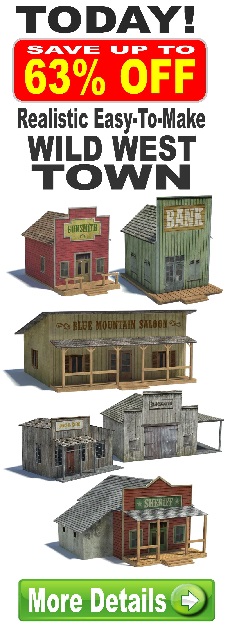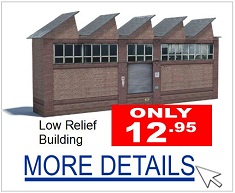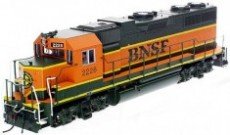Everything on model trains, model railroads, model railways, locomotives, model train layouts, scenery, wiring, DCC and more. Enjoy the world's best hobby... model railroading!
🚂 𝗕𝘂𝗶𝗹𝗱𝗶𝗻𝗴 𝗮 𝗹𝗮𝘆𝗼𝘂𝘁? 𝗗𝗼𝗻’𝘁 𝗼𝘃𝗲𝗿𝗹𝗼𝗼𝗸 𝗵𝗲𝗶𝗴𝗵𝘁 & 𝘄𝗶𝗱𝘁𝗵!
Build Smart: The Ideal Height and Width for Your Model Railroad Layout
When it comes to building a model train layout, most people focus on track plans, scenery, or wiring. But here’s something just as important: the height and width of your layout. Get this wrong, and you’ll be uncomfortable, frustrated, and possibly even damaging your hard work.
Finding the Right Height
The “perfect” height depends on how you enjoy the hobby. If you like standing back and watching the trains roll by, a higher layout… around 48 to 52 inches… gives you that eye-level view of scenery and operations.
But if you’re more into hands-on switching and operations, go a bit lower… around 40 inches… so you can easily reach in and manipulate cars, track switches, and scenery.
Got kids or grandkids involved? Think lower still, maybe 30 to 36 inches, so they can see the action without struggling.
Don’t Overstretch the Width
Width (or depth) is just as critical. A layout against a wall should stay between 24 to 30 inches deep so you can comfortably reach every spot. Anything more, and you’ll find yourself climbing over scenery to fix derailments or uncouple cars. Obviously, the scale you are building and operating is a consideration.
For U-shaped or island-style layouts, you can go wider… 36 to 48 inches… since you’ll have access from multiple sides. Always test your reach first: can you get to every spot without leaning too far or damaging scenery?
Plan for the Future
Remember, higher benchwork shortens your reach, and none of us is getting younger. If possible, build access holes or design your layout so it can be reached from more than one side. Maintenance is part of the hobby, so plan smart now, and you’ll enjoy smoother operations for years to come.
👉 Pro Tip: Download your free Model Builders catalog here: https://www.modelbuildings.org
1. Benchwork Building
- In the planning section: “higher benchwork shortens your reach” → “benchwork”
Picking the Right DCC Decoder with Sound for a Conversion
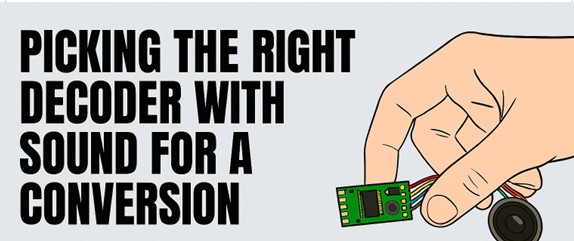
Luis asks readers:
“I’m upgrading my layout from DC to DCC and want to start by converting a few engines. How do I figure out which decoder and sound setup is right for each locomotive? Any advice on matching the right parts?”
You can add your comments and thoughts under this post.
Magic: How This Tiny Town Packs in Big Detail
N scale might be small – but the possibilities are massive.
This layout proves that you don’t need a spare garage to build something breathtaking. With a footprint barely larger than a card table, this miniature town delivers realism, charm, and operational interest in every square inch.
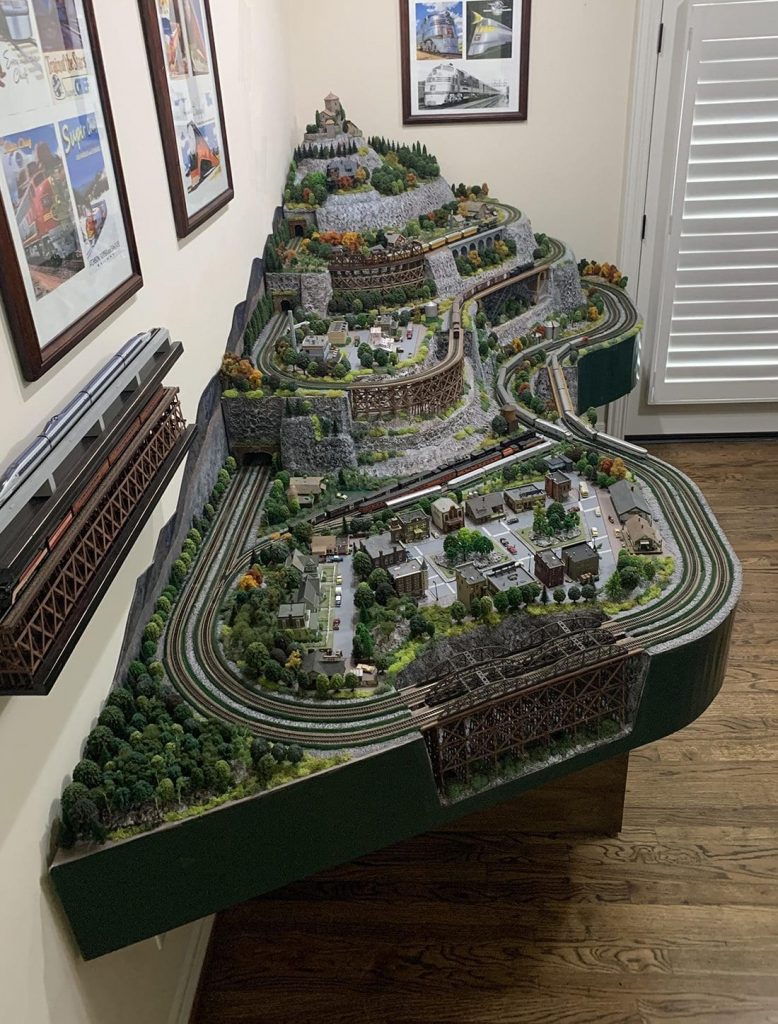
This image showcases the kind of detail possible in N scale – from layered terrain to realistic trackwork and scenic integration. Here’s how the builder made it work — and how you can too.
🧠 1. Smart Compression
Instead of cramming everything in, the builder chose a theme: a rural town with a freight spur and a passenger depot. Selective compression allowed:
- A believable main street
- A small industry with switching potential
- A scenic backdrop that suggests more beyond the layout
- CLICK HERE for how to plan your N Scale Layout
📌 Tip: Focus on storytelling, not quantity. A few well-placed buildings can suggest a whole town.
🏗️ 2. Layered Scenery
Despite the scale, the scenery pops with depth:
- Foam terrain shaped into gentle hills
- Ground cover blended with fine turf and static grass
- Trees made from twisted wire and flocking
📌 Tip: Use vertical elements — like trees, poles, and bridges — to break up the horizontal plane.
🏘️ 3. Detailed Structures
The buildings are small, but they’re full of character:
- Weathered walls with chalks and washes
- You can download scale model building plans from modelbuildings.org
- Signs, posters, and tiny details that reward close inspection
📌 Tip: Add life with figures, vehicles, and subtle signs of activity.
🎛️ 4. Operational Fun
Even in a compact space, trains run with purpose:
- A short local freight switches the industry
- A passenger train stops at the depot
- Hidden staging allows for train rotation
📌 Tip: Use car cards or switch lists to add realism to your sessions.
N scale isn’t just about saving space – it’s about unlocking creativity. With careful planning and a focus on realism, even the tiniest town can leave a big impression.
Want downloadable buildings? Visit modelbuildings.org
🚂 This HO Layout Took Years to Build — Here’s What Makes It Tick

Many years. Countless hours. One unforgettable HO scale layout.
What may have started as a sketch on graph paper became a fully immersive miniature world — complete with weathered buildings, working signals, and a freight schedule that runs like clockwork. But what really makes this layout tick isn’t just the time spent. It’s the smart choices, the small details, and the lessons learned along the way.
Here’s what sets this layout and other great layouts apart — and what you can borrow for your own build.
🧠 1. Planning with Purpose
Before a single track was laid, the builder spent months refining the track plan. The goal? Operational interest. That meant:
- A mix of industries for switching
- A continuous run for casual viewing
- Hidden staging to simulate “beyond the horizon” traffic
📌 Tip: Use free layout planning software or graph paper to test ideas before committing. A well-planned layout saves years of frustration.
🏗️ 2. Layered Scenery That Tells a Story
This layout doesn’t just look good — it feels lived-in. From cracked sidewalks to rusted water towers, every scene has a backstory.
- Ground foam blends with real dirt for texture
- Buildings are kitbashed and weathered with chalks and washes
- Figures are posed mid-action — not just standing around
📌 Tip: Start with one scene and build outward. Think like a movie director: what’s the story here?
🎛️ 3. Electronics That Work (and Stay Working)
DCC powers the layout, but it’s the reliability that impresses. The builder used:
- Bus wiring with color-coded leads
- Soldered connections (no push-fit terminals)
- Circuit breakers to isolate shorts
📌 Tip: Label everything. Future-you will thank past-you when troubleshooting.
🧰 4. Clever Cost-Saving Hacks
Three years is a long time — and costs can add up. This layout used:
- DIY trees from twisted wire and ground foam
- Printed buildings from modelbuildings.org
- Repurposed LED strips for layout lighting
📌 Tip: Don’t underestimate what you can do with cardboard, paint, and patience.
🕰️ 5. Operations That Keep It Alive
The layout isn’t just for show — it runs like a real railroad. With a timetable, switch lists, and car cards, every session feels purposeful.
📌 Tip: Even a small layout can benefit from operations. Start simple: pick up and drop off cars with a reason.
💬 Final Thoughts
Three or more years might sound daunting, but this layout and others prove that steady progress and smart choices lead to something truly special. Whether you’re just starting or refining your fifth layout, the key is to build with intention — and enjoy the journey.
Want to see more layout tips, scenery tricks, and downloadable scale model buildings? Visit modelbuildings.org
9 Fun and Creative Ways to Use Model Train Shipping Containers
Easy Ways to Use N, HO, or OO Scale Containers For Model Railroad Projects
Model shipping containers are some of the most versatile props you can add to your train layout. They’re colorful, realistic, and with a little imagination, they can do so much more than just ride a flatcar. Here are 9 creative ways to put them to work:
- Stack ‘Em High – Build a busy container yard by stacking them in rows. Add forklifts or cranes for extra realism.
- Load on Flatcars – The classic move! Secure them with chains or corner locks for authenticity.
- Pop-Up Shops & Offices – Just like real life, containers can become trendy cafes, offices, or site shacks.
- Container Homes – Stack two together for a bunkhouse or quirky living quarters.
- Barriers & Fences – Line them up to block off industrial zones or yards.
- Weathered Props – Rust, graffiti, or heavy weathering makes them perfect for photo backdrops.
- Workshops & Sheds – Add barrels and tools for a gritty little repair shop.
- Scrap & Junk – Beat up an old one and toss it behind a warehouse for realism.
- In Action – Stage one being lifted by crane or hauled on a truck.
Whether you’re modeling a bustling intermodal yard or just adding extra detail to your layout, shipping containers are a quick way to inject life and realism.
Fred, for example, built containers for his radio-controlled 1/550 scale ship using printable scale plans from ModelBuildings.org
Beginner-Friendly Power Pack That Works with Future DCC Plans
Kevin asks:
“I’m still using DC right now, but I plan to switch to DCC eventually and maybe use a handheld throttle setup. I need a good, affordable power pack that works now but won’t be a dead-end later. Any recommendations?”
Join the conversation below.
Dusty Locomotives and Cars
Wayne asks:
“Some of my older locos are quite dusty, especially in the hard to get at places. What’s the best way to clean them – an aerosol air in a can like they use on computer keyboards?”
Join the conversation and add your suggestions below.
Smart Ways to Plan Loops on Your Model Railroad
Alright, let’s talk loops. If you’re anything like me, you could happily sit back and watch trains circle around a layout for hours. It’s relaxing, it’s fun, and honestly… it’s part of the magic of model railroading. But here’s the thing: planning those loops takes a bit of thought if you want smooth operation and a layout that looks realistic rather than toy-like.
Here are some solid ideas (and a few important tips) to help you make the most of loops on your railroad.
- Continuous Running or Point-to-Point?
Decide up front if you want endless running or operations between two terminals. Loops are great for watching trains roll, but they take space. - Oval or Dogbone Simplicity
An oval is easy, but a dogbone adds length and interest without extra wiring headaches. - Handle Reverse Loops Carefully
They’re fun but need special wiring or an auto-reverser if you’re using DCC. - Try Stacked Loops
Running one loop above another makes your layout feel bigger, but keep grades gentle. - Hide Loops Behind Scenery
Tuck loops behind mountains, buildings, or trees. It creates mystery and staging options. - Use Broad Curves
Broader curves look better and reduce derailments, especially with longer cars. - Plan for Access
Always leave a way to reach hidden sections. A derailment you can’t access = frustration.
Bottom line? Loops can be as simple or as complex as you want. With a little planning, and some clever scenery, you’ll avoid the “toy train around the Christmas tree” look and create something that feels like a real railroad.
Keep Your Trains Safe: Why Track Too Close to the Edge Is a Bad Idea
If you’ve been in the hobby long enough, you’ve probably seen it, or maybe even experienced it yourself. A beautiful locomotive takes a wrong turn, derails, and suddenly it’s airborne, heading straight for the floor. Ouch. That’s the risk you run when your track is too close to the edge of the layout.
I get it. Sometimes space is tight and you just want to squeeze in one more siding or a longer mainline. But here’s the truth: running track right up to the edge is just asking for heartbreak.
The Real Dangers of Edge Running
- Derailments happen. A slightly misaligned switch, a bit of uneven track, or a simple bump, and your loco is on a one-way trip downwards. Repair bills (and emotional damage) can be costly.
- Accidental bumps are real. Shared spaces like garages, spare rooms, or family areas mean pets, kids, or even your own elbow could send your train tumbling.
- Gravity always wins. Once a train starts falling, nothing stops it until it smashes against the floor—and that’s never a happy ending.
Smart Solutions That Work
So, how do you keep your pride and joy safe? Here are a few tried-and-true ideas:
- Add a barrier. Plexiglass, a small wooden lip, or even a scenic ridge can catch a runaway train. Blend it into the scenery so it looks natural.
- Keep a buffer zone. If you’re still planning your layout, give yourself 2–3 inches of breathing room between the track and the edge.
- Use walk-around controls. Wireless throttles let you follow your train, keeping you close by if something goes wrong near the edge.
Bonus Tip: Make It Look Better Too
Here’s the fun part… moving your track back a few inches isn’t just safer, it actually makes your trains look better. When they disappear behind a fence, a bush, or a building, it creates the illusion of a longer run and adds realism.
Final Word
Bottom line? Don’t let your trains flirt with danger. A little planning, a simple barrier, or just a few inches of extra space can save you from disaster – and keep your engines running happily for years.
Best HO Starter Train Set for Someone Planning on DCC
Aaron asks readers:
“I’m new to model trains and looking to buy my first HO set. I’d like to eventually upgrade to DCC and maybe use JMRI. There are so many options out there, any suggestions for a good starter set or manufacturer that offers quality and is compatible with future DCC upgrades?”
Why Turnouts Inside Tunnels Can Be Trouble on a Model Railroad
If you’re planning your next model railroad layout and thinking about adding a turnout (or switch) inside a tunnel, let me just pause you for a second, because that little decision could lead to big headaches down the track.
Now, don’t get me wrong. I’m not here to tell you that it’s never okay. But if you’re fairly new to the hobby—or even if you’ve been doing this a while, it’s worth thinking twice before hiding a turnout inside a tunnel. Let me explain why.
Turnouts Add Interest… But Can Be Tricky
There’s no doubt about it… turnouts can make a layout way more interesting. They let your trains branch off, switch tracks, and bring operations to life. But they can also be one of the more fiddly parts of trackwork. Even in easy-to-reach spots, turnouts can cause trouble with alignment, wiring, points not fully throwing, or debris getting caught in the mechanism.
So if they’re tricky in plain sight, just imagine trying to fix one that’s buried deep inside a tunnel where you can’t even see it!
Out of Sight, Out of Reach… Out of Luck?
That’s the big issue with tunnel turnouts… access. If something goes wrong (and eventually, something will), how are you going to get in there to sort it out? Cleaning? Awkward. Repairs? Frustrating. Replacing a turnout in a tight space with a tunnel roof above it? Good luck.
Plus, you’re flying blind. Can you be 100% sure that hidden turnout has flipped the right way for the next train? Because if it hasn’t, you’ll know pretty quickly… and probably not in a good way.
Real Railroads Avoid It Too… And For Good Reason
It’s not just modelers who shy away from putting turnouts in tunnels. Real-life railroads have to think about the same kinds of problems, only on a much larger and more expensive scale.
Turnouts inside full-size tunnels mean:
- Limited space for installation and maintenance
- Higher safety risks during inspections or emergencies
- Increased wear and tear in a hot, poorly ventilated environment
- Difficult access for crews to fix mechanical or signal issues
So if even the pros try to avoid it when they can, that’s a pretty good signal to us hobbyists.
So What Can You Do Instead?
If your track plan feels like it’s forcing you into placing a turnout inside a tunnel, don’t panic. There are a few workarounds that still give you the flexibility you want, without burying a potential problem where you can’t reach it.
- Move the turnout just outside the tunnel entrance.
It’s a simple fix, and often just a slight adjustment to your track plan. - Use a double tunnel portal.
This gives you space for two tracks entering the tunnel side-by-side, after the turnout has safely done its job in the open. - Design your tunnel with a removable top or back.
If you must place a turnout inside, at least build in a way to access it easily. A lift-out mountain or removable wall can be a lifesaver.
I’m not here to be a layout dream crusher. Sometimes, depending on your space and design, you just have to hide a turnout inside a tunnel. And that’s okay… as long as you go in with your eyes open, and preferably with a screwdriver in one hand and an access hatch nearby.
But for most of us, especially when we’re just getting started, keeping things visible, reachable, and maintainable is the better way to go. So save yourself some trouble down the line, and think twice before sending your switches into the shadows.
Happy modeling, and may all your trains stay on the right track!
Noisy Kato Series SD80MAC
Lewis has HO scale and asks:
“My Kato Series SD80MAC has slowed and emits a high-pitched shrieking sound. I oiled the bearings, but it made no difference. I’m not sure of the cause or how to fix it.”
Add your thoughts to assist Lewis below.
Best Materials for First HO Layout Benchwork
Ryan asks for advice:
“I’m just getting started on my first HO layout and have a spare room to work with. I want to build benchwork that’s solid and expandable. What materials should I use for the base and supports? Any tips from people who’ve done this?”
You can post your suggestions below.
Planning Your Model Railroad
Having some areas of a model railroad out of reach is a mistake that should be avoided when prior to actually constructing your railroad layout. At some future time, you’ll need to recover a derailed engine from somewhere on your track. Hopefully this short video assists someone.
Converting Athearn Blue Box Locos to DCC with Sound
Travis asks readers:
“I’ve got 4 old Athearn Blue Box locos (DC) and I want to upgrade them to DCC with sound. A hobby shop said it’s doable but might not perform great. Has anyone done this successfully? What should I expect, and how can I get the best results?”
8 Creative Ways to Use Scale Model Shipping Containers on Your Model Train Layout
Add life, color, and character to your layout with these fun container ideas.
If you’re into model railroading, you probably already have a few scale model shipping containers kicking around—or maybe you’ve been eyeing some at your local hobby shop. These little metal boxes aren’t just for sitting on flatcars. In fact, they can become some of the most versatile and visually interesting props on your entire layout.
Here are 8 fun and creative ways to make the most of your scale model containers.
1. Stack ‘Em High at a Container Yard
Let’s start with the classic. Create a container terminal scene by stacking containers in neat rows – or go for that slightly messy, lived-in look. Add a container crane or forklift, throw in some figures, and you’ve got an eye-catching intermodal scene. Mix up the colors and company logos for a more realistic feel.
2. Load Them Up on Flatcars
Nothing says modern freight like a train full of containers. You can load them onto well cars, spine cars, or flatcars. If you want to get really detailed, add miniature chains, twist locks, or weathering to the cars and containers. It’s a small touch that adds big realism. These shipping container plans are available for download in OO/HO scale or N scale at https://www.modelbuildings.org/shipping-containers
3. Create a Pop-Up Shop or Tiny Office
Want to add some modern flair to your city or yard? Convert a container into a trendy pop-up shop, rail yard office, or even a quirky coffee kiosk. Just cut in some windows, paint it up, and you’re good to go. They’re great for urban or industrial settings.
4. Build a Container Home or Bunkhouse
Just like in the real world, containers make great portable homes. Stack one or two, add some stairs, a porch, maybe a little roof extension—and you’ve got yourself a rugged little home or worker bunkhouse. Perfect for rural or mining layouts.
5. Use Containers as a Fence or Security Barrier
Need to block off part of a yard or construction site? Line up a few containers side-by-side as a fence or makeshift barrier. It’s a fast, believable way to break up space on your layout and make areas feel more secure and enclosed.
6. Set Up a Mini Workshop or Tool Shed
A single container can easily become a workshop or tool storage area. Add some exterior details—like oil drums, spare wheels, maybe a ladder—and place it near a roundhouse, yard, or rural trackside. It adds charm and makes a scene feel “lived in.”
7. Abandon One Behind a Warehouse
For a layout with a bit more grit and story, beat up an old container and leave it behind a factory or warehouse. Add some overgrown grass, faded paint, and maybe a dent or two. It gives your layout that subtle touch of realism and decay.
8. Show One Being Delivered
Set up a scene with a truck pulling a container trailer or a crane unloading a container from a flatcar. Even though the layout isn’t moving, this kind of action scene makes the whole area feel more alive.
Final Thoughts
Model shipping containers are small, but they pack a punch when it comes to adding detail, character, and realism to your layout. Whether you’re aiming for a busy intermodal terminal or just want to spice up an industrial backlot, there’s always a way to put a container to good use.
Got your own clever use for containers? Share it with the community – we modelers love a good creative idea.
Trains Derailing at Atlas Switch Frogs
Todd asks readers:
I’m having a lot of derailments when my trains go through the frogs on my Atlas turnouts. Both engines and cars are affected. I’ve checked the switch mechanism, but I’m not sure what else to look at. Any tips on how to stop these derailments?
Please add any comments or thoughts below to assist Todd.









